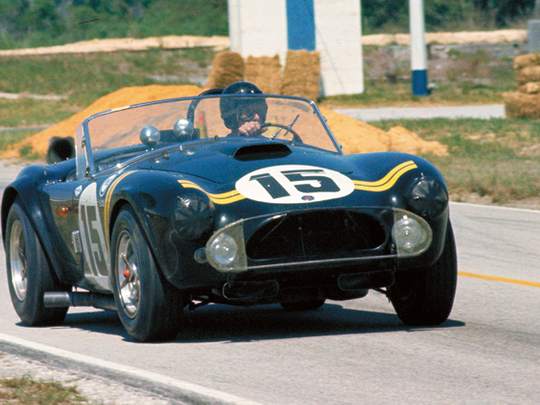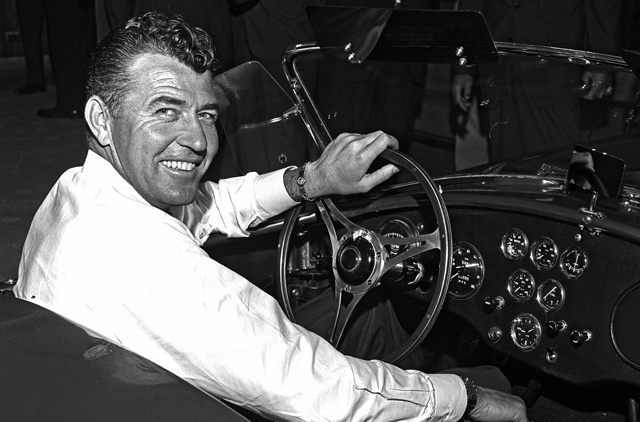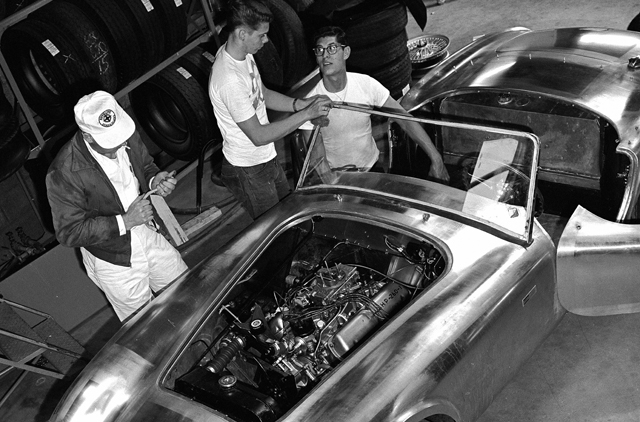
You could lose control of the biggest and baddest AC Cobra, the 427 cubic inch (7.0-litre) V8 at any speed and in any gear. It was one wild ride and just the sort of thing attention seekers would want. There was certainly no hiding in it and nothing came close to its noisy and flamboyant character.
It was back in 1961 when American racing driver Carroll Shelby had the idea to stick a Ford V8 in the engine bay of the AC Ace two-seater roadster. AC was delighted with the proposition for its hand-built car which was attractive but underpowered. Since it was nearing the end of its production run, a new V8 would generate some much-needed interest.
Bristol Cars had stopped making the 120bhp 2.0-litre inline-six motor which powered the Ace in 1961 so Shelby's offer could not have come at a better time. He first tried his luck by asking Chevrolet to provide some engines but the gold Bowtie didn't want another sportscar to give its Corvette any competition. Instead, it was Ford that gave Shelby two of its all-new 260 cubic inch (4.3-litre) small-block V8 engines. In 1962, engineers at AC Cars air-freighted a specially prepared Ace chassis to Shelby in Los Angeles. His team stuck a 260 into the bay at hot-rodder Dean Moon's garage in Santa Fe Springs, California. The AC Cobra was born...
The re-engineered Ace featured a new larger rear-axle, disc brakes in all four corners, flared fenders to hide much fatter tyres, and rack-and-pinion steering. But it retained the same twin-tube chassis frame, albeit strengthened, and the all-independent suspension.
Shelby built it to take on the Ferraris at Le Mans, but what he didn't realise was he was building the most outrageous motoring legend of all time. In 1963, it was the highest finishing British car at Le Mans.
Things got even better when a new chassis with coil spring suspension was introduced in 1965 and the even more powerful 427 cubic inch V8 rated at 425bhp, with a top speed of 260kph, joined the range. At the time it was the fastest accelerating production car in the world. It hit 0-100kph in 4.2 seconds. But it was also extremely dangerous and would easily spin out of control because of the sheer amount of power and its lightweight construction.
The AC Cobra attained cult status in Sixties America thanks to its extrovert character and powerful engine. It swept the board in international competition, winning the World Sportscar Championship that same year. It had done its job and so Carroll and Ford moved on to the more profitable Shelby Mustang 350.
Regardless of its racing pedigree, Cobra sales never hit the heights. No car was as politically incorrect, what with strict emissions and safety laws coming into the fray, so in 1967 AC stopped production.
But ever since, there have been countless continuation cars and kit car replicas, and in fact more Cobras exist today than were ever originally built when the car first appeared on the scene in the Sixties.
As for the legendary 427, it's one of the most sought-after and replicated cars ever made.













